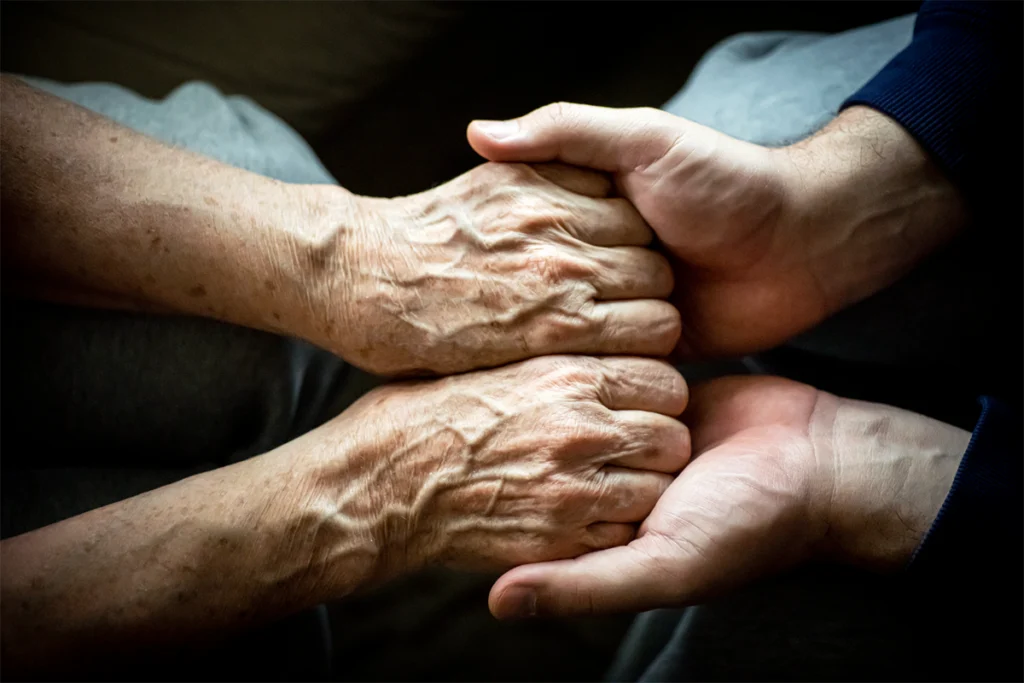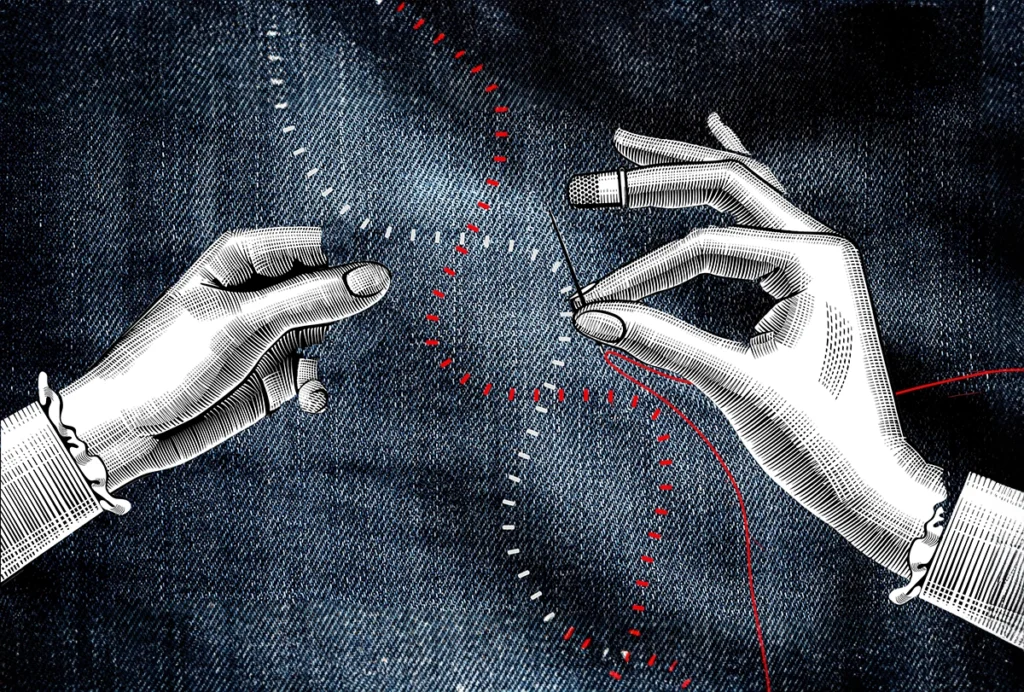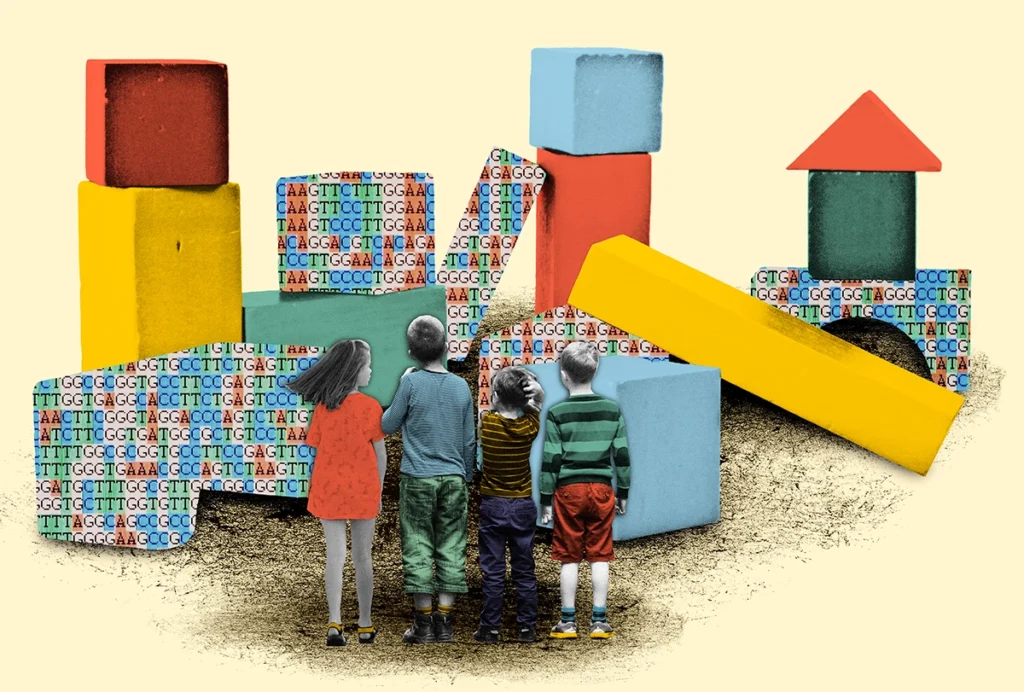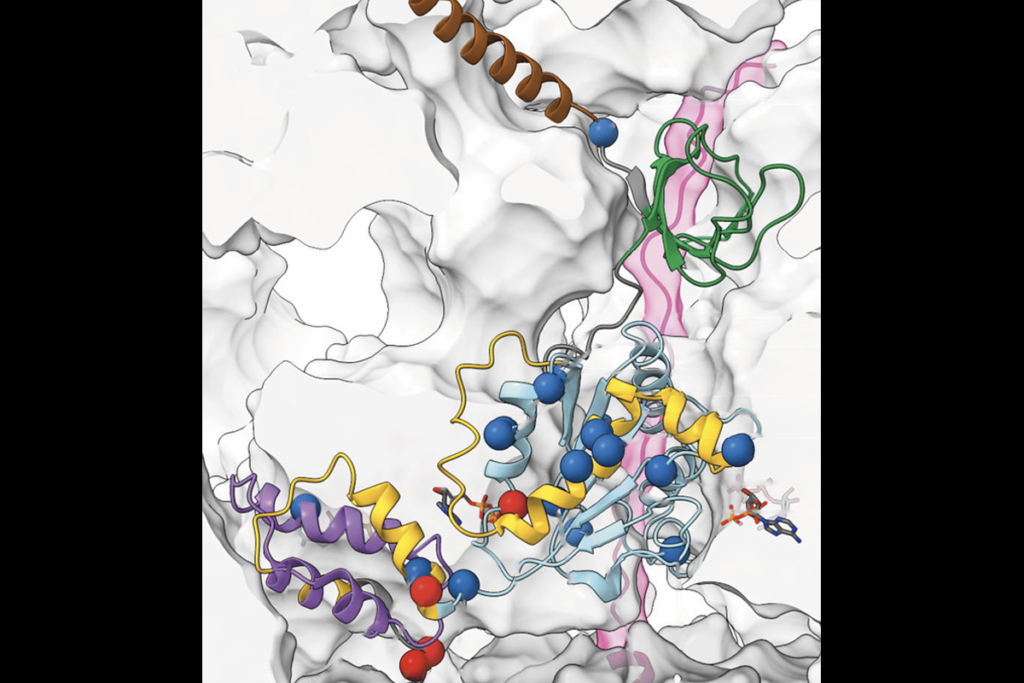
Some sibling sets arrive at autism with different mutations
Less than one-third of sibling pairs with autism who carry rare mutations in autism-linked genes share those mutations, according to the largest study yet to sequence whole genomes of people with the disorder. The study questions the assumption that autism’s risk factors run in families, but some experts are skeptical.
Less than one-third of sibling pairs with autism who carry rare mutations in autism-linked genes share those mutations, according to the largest study yet to sequence whole genomes of people with the disorder1.
The study, published 26 January in Nature Medicine, questions the assumption that siblings with autism carry the same risk factors, but some experts are skeptical.
Although it is large for whole-genome sequencing, the study is smaller than most sequencing studies, examining just 170 people with autism. But if the findings hold up, they will have important implications for genetic counseling, says lead researcher Stephen Scherer, director of the Centre for Applied Genomics at the Hospital for Sick Children in Toronto.
“If there is a child with autism and a known genetic cause, you can’t just sequence that same gene in later-born kids, since quite often they will have actually different mutations,” Scherer says.
The study also reveals a pitfall of comparing the DNA sequences of siblings with autism to uncover genes linked to the disorder.
“Time and again, we find that autism is clearly not a mix of single-gene disorders [in which] siblings will necessarily share all the same risk genes,” says Joseph Buxbaum, director of the Seaver Autism Center at the Icahn School of Medicine at Mount Sinai in New York City, who was not involved in the study.
He and other experts say that the study’s significance may be overblown. Most of the gene variants identified in the study are only weakly linked to autism, says Michael Wigler, professor at Cold Spring Harbor Laboratory in New York. “I just think they need a much larger sample set, and to look at the genes for which there’s much higher confidence [about risk].”
Systematic search:
Most previous sequencing studies of people with autism have focused on the small fraction of the genome that encodes proteins, known as the exome. Scherer and his colleagues instead sequenced the complete genomes of 85 quartets — families with two children who have autism and two unaffected parents.
They looked for all types of inherited and spontaneous genetic variants, including single nucleotide changes, short insertions and deletions called ‘indels’ and longer ones known as copy number variations (CNVs). The study is the latest advance in an ongoing effort, known as MSSNG, to sequence the whole genomes of at least 10,000 families affected by autism.
The researchers scoured the genomes for rare, harmful mutations in genes linked to autism. They found 46 such mutations in 36 families, but only 11 of those families have sibling pairs carrying the same mutation; sibling pairs in the remaining 25 families show no genetic overlap.
Several news articles, however, misinterpreted the findings. For example, The New York Times reported that “most siblings with a diagnosis of autism do not share the same genetic risk factors for the disorder.”
“That’s just not true from this data,” says David Ledbetter, chief scientific officer at Geisinger Health System in Danville, Pennsylvania, who was not involved in the study.It is possible, for instance, that the 49 sibling pairs with no rare autism-linked mutations inherited the same common variants — those present in 5 percent or more of the population — or mutations in genes that have not yet been linked to the disorder, Ledbetter says.
What’s more, only 10 of the mutations identified in the study involve genes strongly linked to autism. The remaining have tenuous ties to the disorder, meaning they could also appear in typically developing children, says Brian O’Roak, assistant professor of molecular and medical genetics at Oregon Health & Science University in Portland, who was not involved in the study.
“If you looked at 85 families with typically developing kids and saw the exact same things, I think it would point out that we have a lot still to learn about the bona fide risk factors for autism,” O’Roak says.
The study is too small to parse out the importance of common genetic variants. Collectively, they are thought to confer about half the risk for autism.
“Most of the heritability of autism likely resides in common DNA variants, and not in the high-impact [rare] variants,” says Mark Daly, associate professor of medicine at Massachusetts General Hospital in Boston, who was not involved in the research.
Many of those rare variants occur spontaneously, meaning they would only be present in one sibling.
“What this [study] is telling us is that the rare, high-impact mutations are not necessarily the full explanation of why autism runs in families,” he says. “And I think we kind of knew that. I don’t think this is so surprising.”
Correction: This article has been modified from the original. A previous version incorrectly stated that rare variants occur spontaneously only after an embryo is formed; in fact, they can also occur in germ cells.
References:
1. Yuen R.K. et al. Nat. Med. Epub ahead of print (2015) PubMed
Recommended reading

Among brain changes studied in autism, spotlight shifts to subcortex
Home makeover helps rats better express themselves: Q&A with Raven Hickson and Peter Kind
Explore more from The Transmitter

New catalog charts familial ties from autism to 90 other conditions

Untangling biological threads from autism’s phenotypic patchwork reveals four core subtypes

